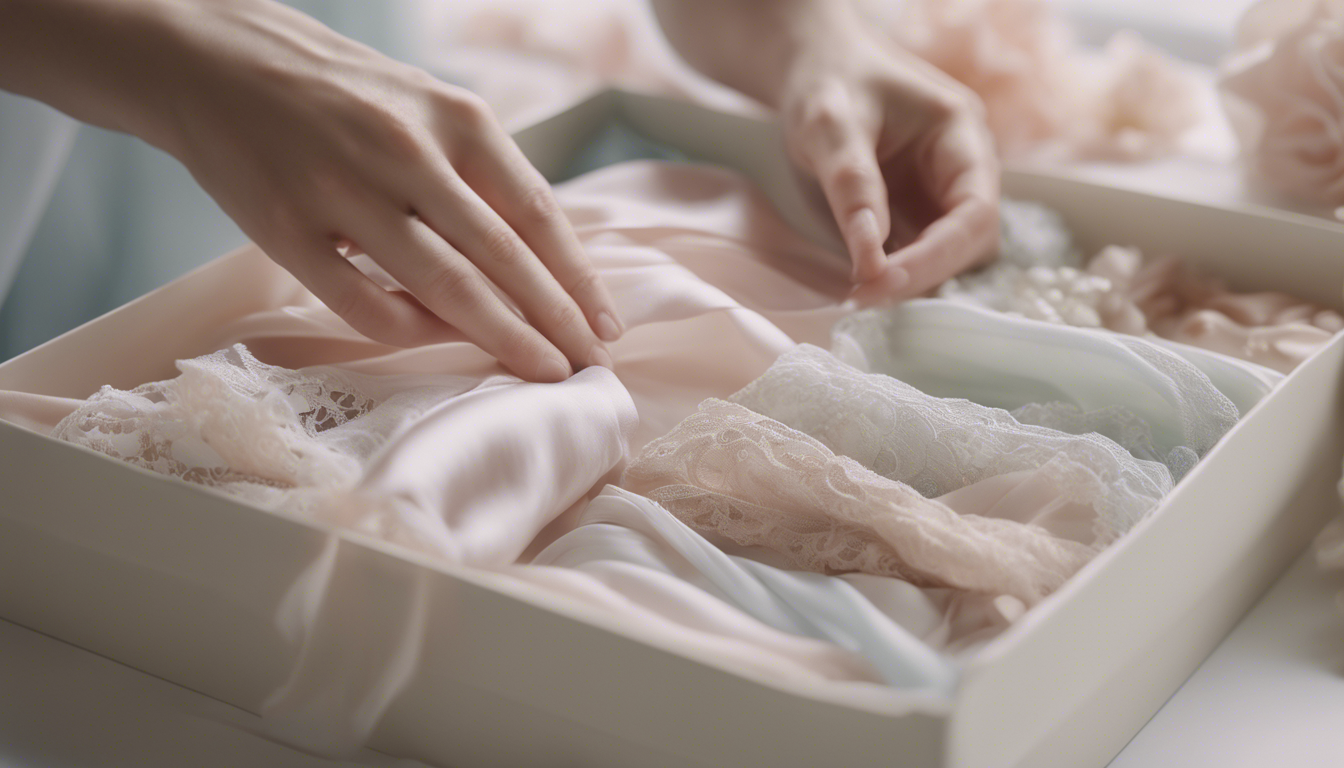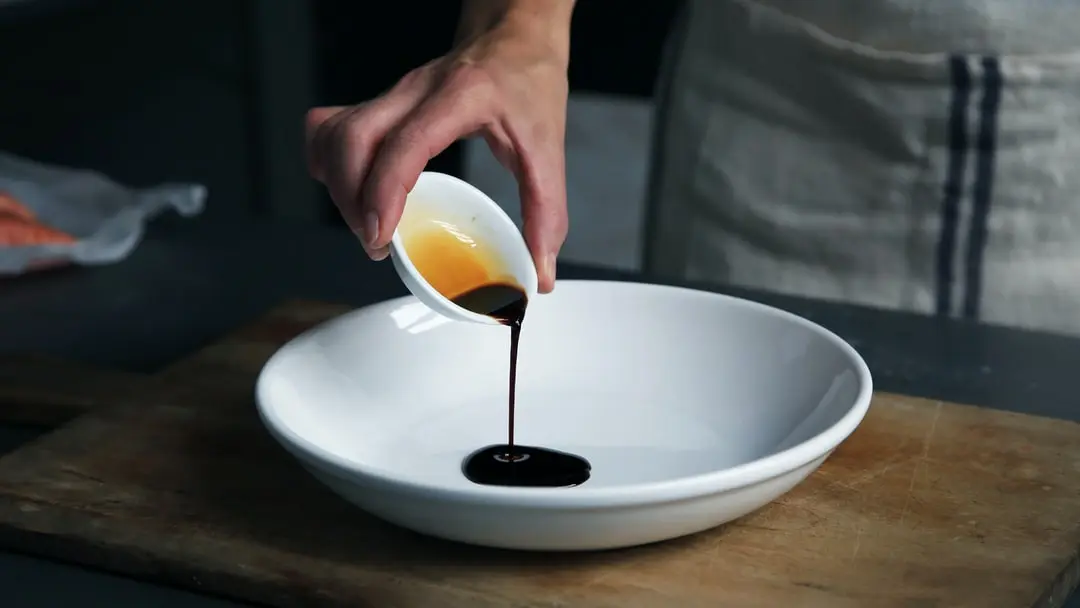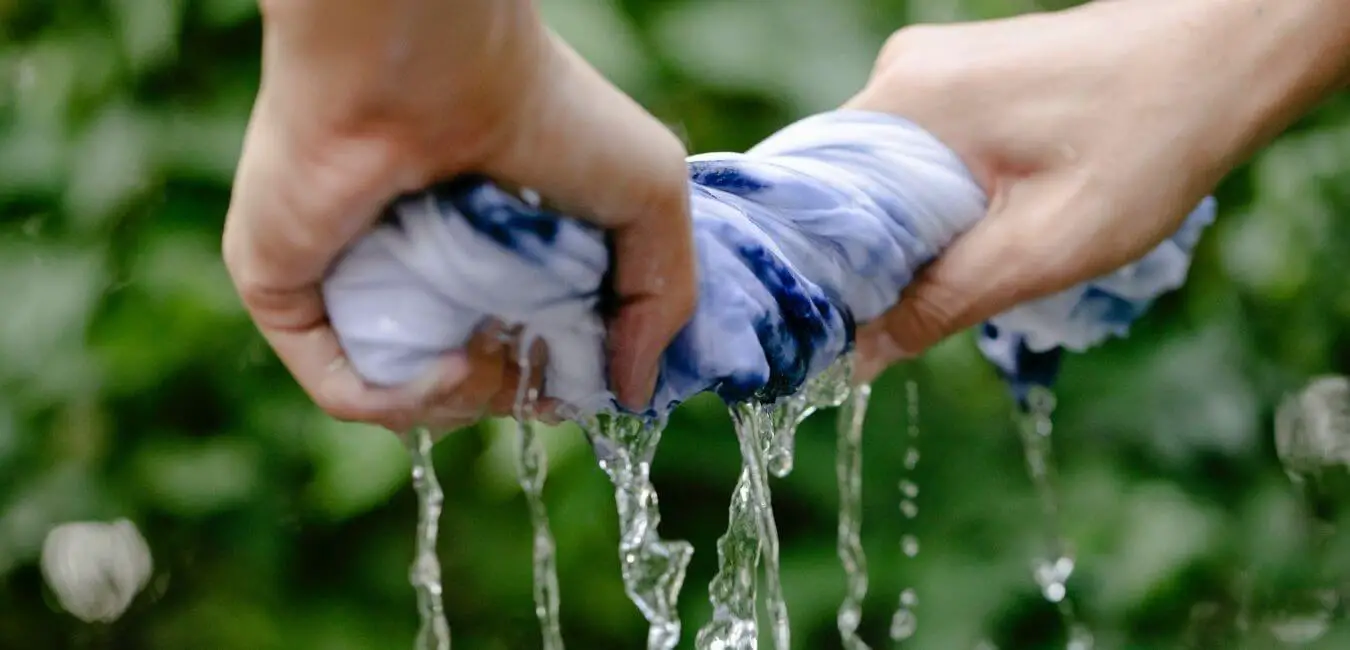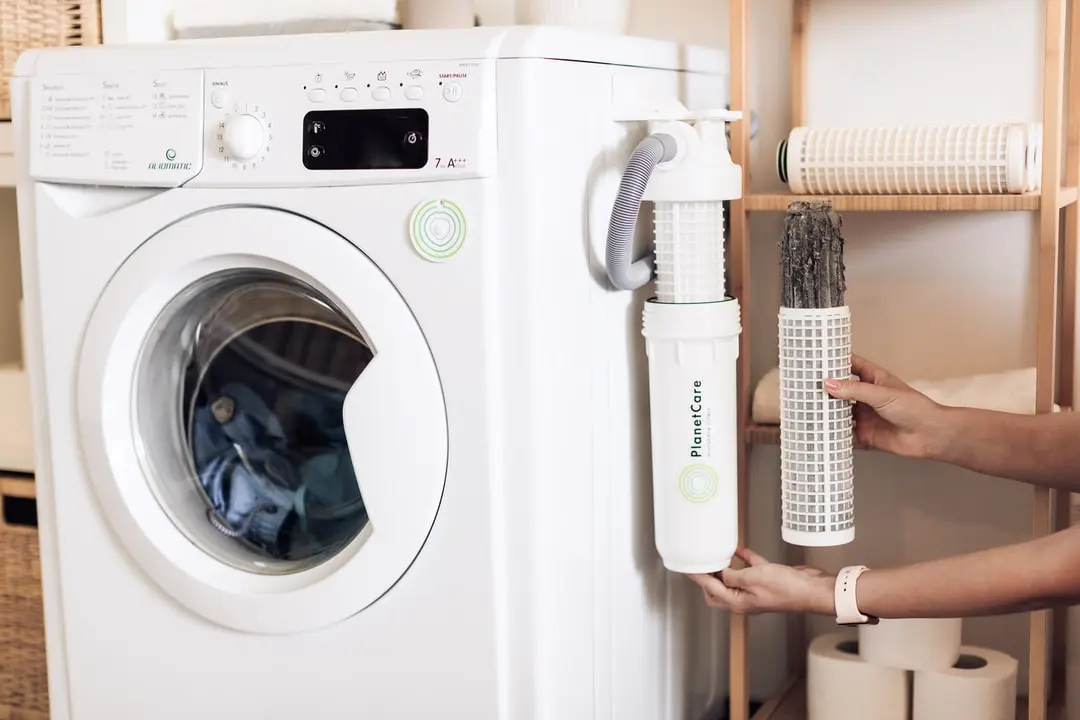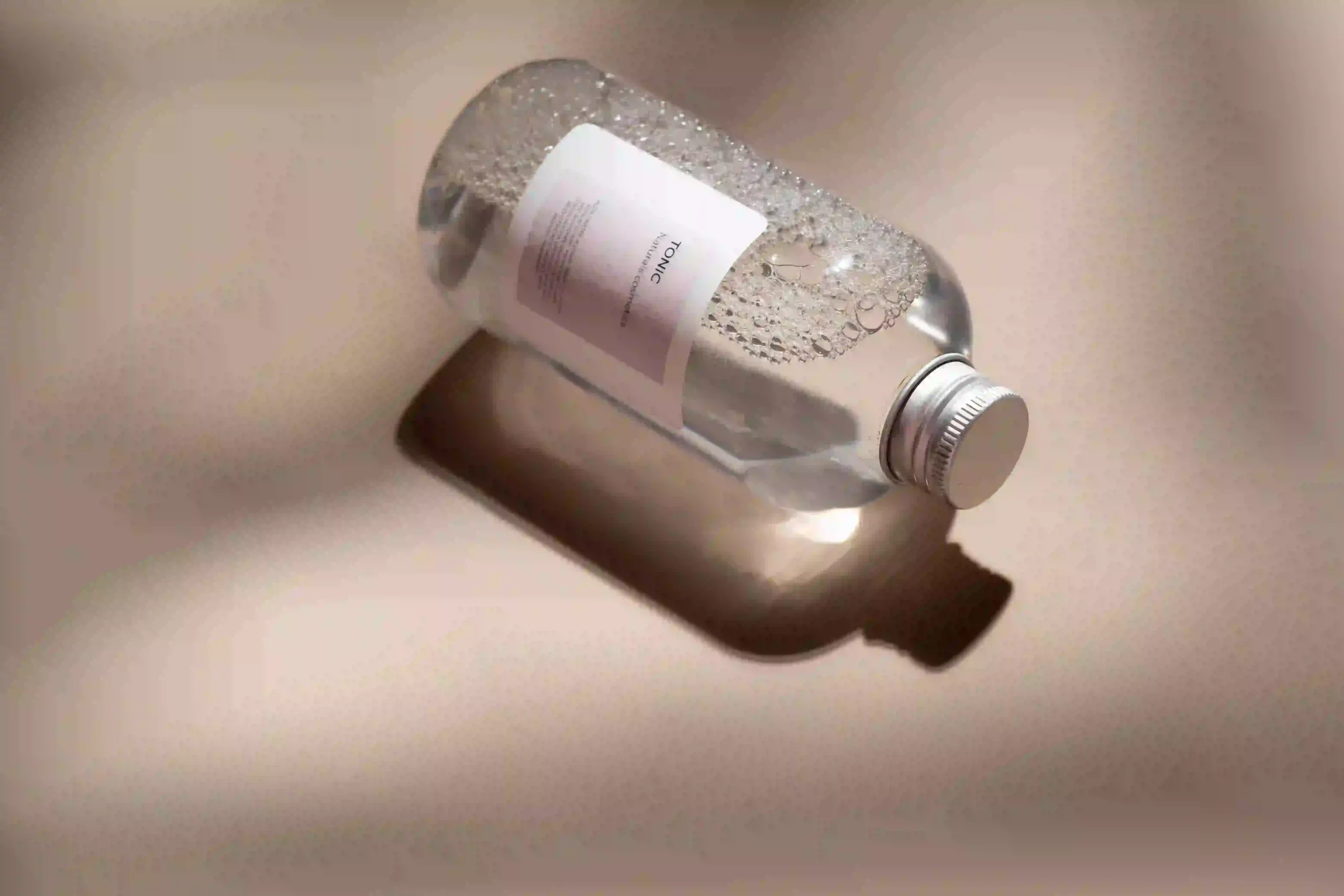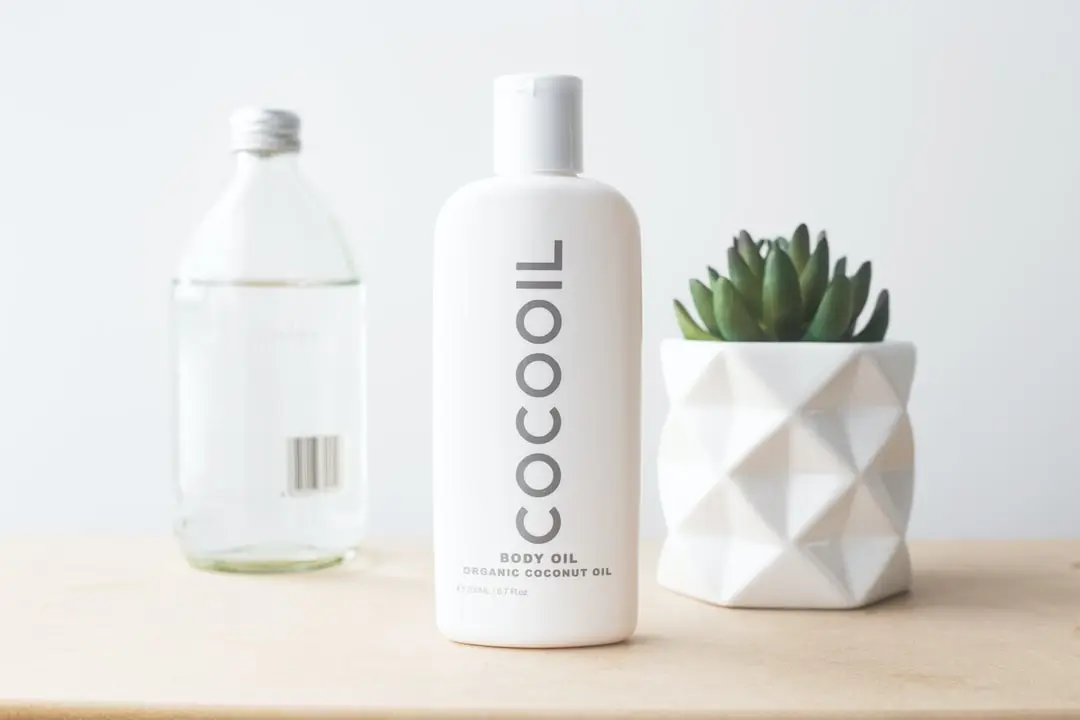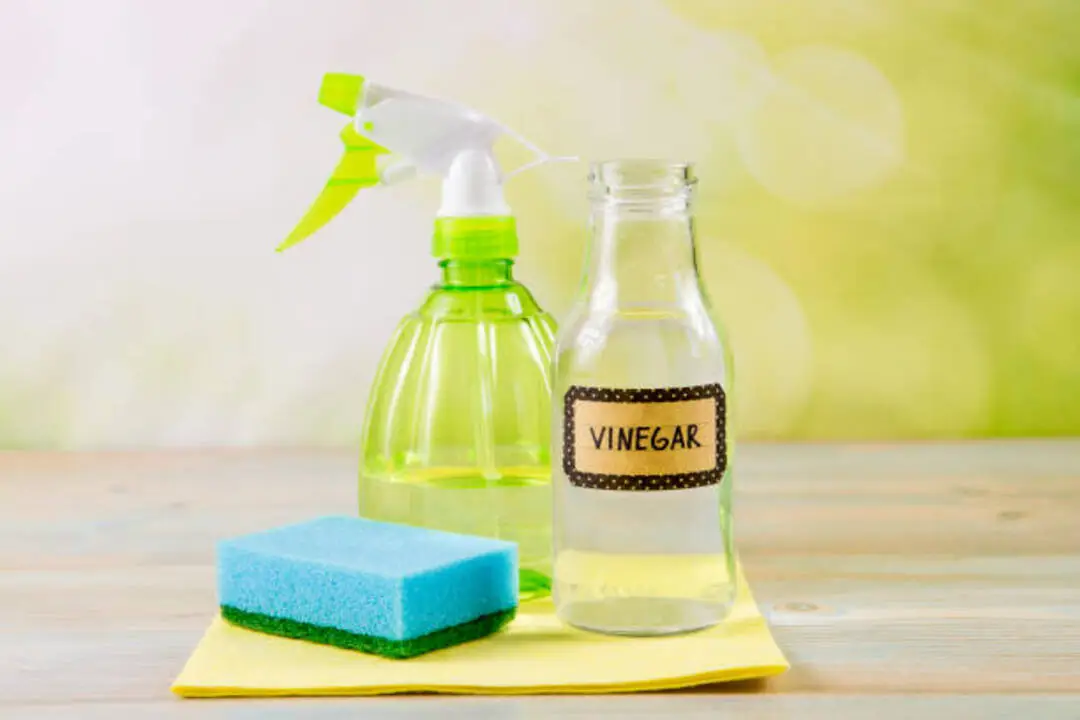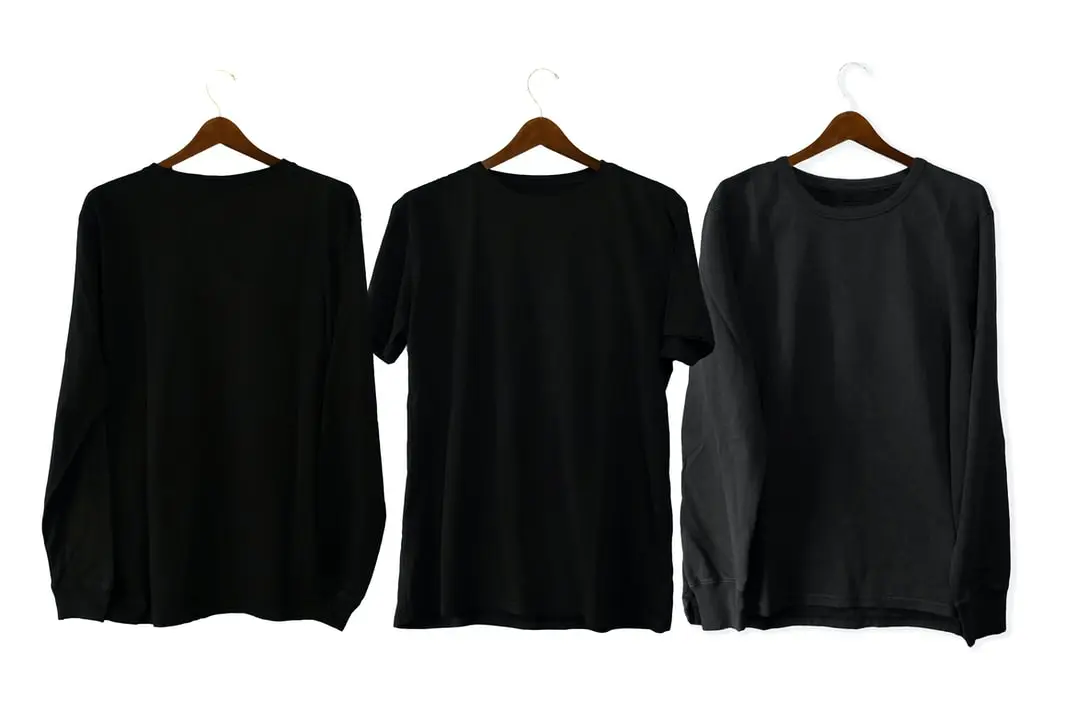Folding delicate fabrics requires a careful and precise approach, much like an artist meticulously working with a fragile canvas. The goal is not merely to complete the task but to maintain the beauty and integrity of each piece.
Selecting the right surface is crucial; a flat, clean area prevents snagging or damage. Utilize tools such as soft cotton cloths or acid-free tissue paper to cushion the fabric during the folding process. Understanding the unique characteristics of the fabric is essential; for example, silk should be handled with extra caution due to its tendency to crease easily.
As you fold, small adjustments can have a substantial impact on the outcome. For instance, when folding a delicate blouse, button it up first to help maintain its shape. For garments with embellishments, placing a layer of tissue paper between the fabric and any surface can prevent scratches or marks. These techniques ensure that your delicate textiles remain in pristine condition, ready to be enjoyed for years to come.
Consider using fabric storage bags that are breathable, such as those made from cotton, to protect your items from dust and moisture. This kind of proactive care will extend the life of your treasured fabrics, making it easier to keep them looking their best.
Choose the Right Surface
Selecting the appropriate surface is crucial when folding delicate fabrics. It’s essential to ensure that your folding materials are arranged on a smooth, clean surface that won’t snag or harm the fabric. A soft, flat table or a designated ironing board is ideal, as it provides the right texture to safeguard those valuable fibers.
When choosing your surface, pay attention to the textures. A hard surface may create stubborn creases or lines that are challenging to remove, while a softer texture can cushion the fabric. For delicate materials like silk, chiffon, or lace, it’s vital to avoid rough edges that can snag the fabric. Therefore, opt for a surface that’s gentle yet firm enough to support your folding process.
Keep the area clean and free from dust and debris. A tidy surface not only maintains the integrity of the fabrics but also enhances your folding experience.
Treating each piece with care ensures that when it’s time to showcase your beautifully folded fabrics, they appear pristine and inviting. This meticulous attention to detail reflects the dedication and effort you invest in serving others.
Gather Necessary Tools
To achieve optimal results when folding delicate fabrics, it’s essential to gather a few key tools. Start with a soft, clean surface, such as a cotton or linen cloth, to safeguard your fabrics during the folding process.
Having a pair of fabric care scissors on hand is also useful; they allow you to trim any loose threads that could catch and cause damage while you work.
A measuring tape or ruler is necessary to ensure your folds are straight and uniform. This attention to detail is crucial for preserving the quality and shape of your delicate items.
Consider using large, flat boxes for storage; these help keep your folded fabrics organized and protected from potential harm.
It’s also wise to use acid-free tissue paper. This material helps prevent creasing and adds extra support during the folding process.
Wrapping your delicate fabrics in tissue paper before placing them in boxes shields them from dust and light, further extending their lifespan.
Sort Fabrics by Type
Sorting fabrics by type streamlines the folding process, making it more efficient. Grouping delicate fabrics based on their characteristics not only simplifies your folding routine but also ensures that each piece receives the appropriate care it needs.
Start by separating items such as silk, chiffon, and lace from sturdier materials. This allows you to customize your folding technique according to their specific requirements.
For example, silk is slippery and creases easily, so it’s best to fold it gently to avoid sharp folds. Chiffon, being lightweight, also needs careful handling; employing a flatter fold can help reduce the likelihood of wrinkles.
Check Care Labels
Before you begin folding your fabrics, it’s important to check the care labels.
These labels contain crucial information about the material and how to properly care for it. Understanding these details can prevent damage to your delicate items during the folding process.
For instance, some fabrics may require hand washing or air drying, while others can withstand machine washing.
Taking a moment to read these instructions will ensure that your clothes remain in excellent condition for a longer time.
Importance of Care Labels
Care labels are crucial for maintaining the quality and longevity of delicate fabrics. Following the care instructions ensures that you protect the fabric and honor the craftsmanship that went into creating it.
Here are three key reasons to always pay attention to care labels:
- Fabric Maintenance: Care labels include specific instructions that guide you on how to care for each type of fabric. This information helps you apply the appropriate techniques to prevent any damage.
- Washing Guidelines: They detail the best washing methods, such as hand washing, machine washing on a gentle cycle, or dry cleaning. Ignoring these guidelines can result in shrinking, fading, or even tearing delicate items.
- Prolonged Lifespan: Adhering to the care label recommendations can significantly extend the life of your cherished garments. This not only benefits your wardrobe but also contributes positively to the environment by minimizing waste.
Identifying Fabric Types
Understanding fabric types is crucial for proper care, and a great starting point is the care labels found on clothing. These labels offer vital information about the fabric’s characteristics, clearly indicating the fiber content and weight. For example, knowing whether a fabric is lightweight silk or heavier cotton can help you choose the most effective folding techniques.
It’s also important to consider texture differences and color variations. Delicate fabrics like chiffon require gentle handling to avoid damage, while sturdier fabrics such as linen can withstand more frequent use. The care guidelines provided on the labels inform you about the appropriate washing or dry cleaning frequency, which helps maintain the items in excellent condition.
Incorporating maintenance tips from the label is essential for extending the lifespan of both sustainable and seasonal fabrics. Furthermore, understanding the printing techniques used on a fabric can impact how you fold and store it, ensuring that its beauty and integrity are preserved.
For instance, items with intricate prints may require more careful handling to prevent creasing or fading, while solid colors may be less prone to such issues.
Use a Gentle Folding Technique
When folding delicate fabrics, it’s crucial to select a suitable surface to prevent any potential damage. Begin with gentle pressure to avoid creasing, and consider using protective layers like tissue paper to safeguard your items. These straightforward practices will help preserve the quality of your fabrics, ensuring they remain beautifully folded and in excellent condition.
For example, if you’re working with silk or lace, laying them flat on a clean, smooth surface will minimize the risk of snags or wrinkles. When stacking, place a sheet of tissue paper between each layer to protect against friction. This method not only keeps the fabrics safe but also maintains their original shape.
Utilizing these techniques will contribute significantly to the longevity of your delicate fabrics, allowing you to enjoy their beauty for years to come.
Choose the Right Surface
Selecting the appropriate surface for folding delicate fabrics is crucial for maintaining their quality. The surface you choose significantly impacts how well your folding methods preserve the fabric’s integrity. It’s best to use a smooth, clean area that reduces friction and prevents snagging.
Consider these three excellent surface materials:
- Cotton Tablecloth: A cotton tablecloth offers a soft and gentle surface, making it suitable for fragile fabrics. This material provides a protective cushion that minimizes the risk of damage during folding.
- Felt Padding: Felt is a forgiving option that helps avoid creases while safeguarding delicate fibers. Its texture ensures that fabrics glide smoothly, allowing for precise folding without causing harm.
- Silk Sheet: When handling silk or satin, using a silk sheet creates a luxurious foundation that enhances the fabric’s natural beauty. This surface not only complements the fabric but also prevents it from slipping or getting caught.
Choosing the right surface is an essential step in the process of folding delicate fabrics. A well-chosen surface will make your task easier and ensure your fabrics remain in pristine condition.
Start With Light Pressure
Start with gentle pressure when folding delicate fabrics, ensuring you handle them with care. The aim is to preserve their beauty while making them easy to store or display. Use a soft touch to avoid creating creases or damaging the fabric’s integrity.
When you hold a corner, apply just enough pressure to secure it without pinching or crumpling the material. These fabrics often feature intricate details that require careful handling, so proceed slowly and methodically. As you fold, allow the fabric to guide your movements; it should flow smoothly under your hands.
If you encounter any resistance, reduce the pressure. Delicate fabrics typically respond well to a light touch, enabling you to shape them without distortion.
Once you finish folding, the fabric should remain smooth and intact, ready for its next use. This careful approach not only maintains the fabric’s appearance but also prolongs its lifespan, making it a worthwhile practice for anyone who values quality textiles.
Use Protective Layering Techniques
Protecting delicate fabrics requires careful layering techniques that prevent damage during storage. Using protective wraps and layering materials helps keep these treasured items safe and in pristine condition. Here are three effective strategies to consider:
1. Select Appropriate Layering Materials: Use acid-free tissue paper or cotton sheets as your protective layers. These materials effectively absorb moisture and prevent abrasion, ensuring your fabrics remain unblemished. Acid-free options are essential because they don’t release harmful chemicals that could degrade fabric over time.
2. Employ Gentle Folding Techniques: When folding fabrics, utilize a soft approach to minimize creasing. Lay the fabric flat, insert a protective wrap between the folds, and avoid sharp bends. This technique distributes pressure evenly, reducing stress on the fabric and preserving its quality.
For example, when storing a silk scarf, rolling it gently with tissue paper can help maintain its shape and appearance.
3. Maintain a Controlled Storage Environment: Store your layered fabrics in a cool, dry space, away from direct sunlight. This practice protects against fading and deterioration, ensuring they remain beautiful for years.
Consider using a breathable cotton garment bag for added protection, as it keeps dust away while allowing air circulation.
Avoid Overcrowding
When folding delicate fabrics, it’s essential to avoid overcrowding to preserve their quality. Overcrowding can cause creases, stretching, or even irreversible damage to items you cherish. To ensure fabrics are stored properly, allow each piece adequate space.
When folding fabrics, choose methods that keep them organized without forcing them together. For instance, fold each item neatly and stack them in a manner that promotes air circulation. This approach not only protects the fabrics but also simplifies the process of locating specific items later.
Using separate containers or dividers for different types of delicate fabrics is a wise choice. This prevents heavier materials from crushing lighter ones.
When storing multiple pieces, consider placing a protective layer, such as tissue paper, between items to minimize friction and further safeguard them.
Create a Folding Routine
To keep your delicate fabrics in pristine condition, establishing a reliable folding routine is crucial. Begin by choosing a clean, flat surface that’s free of clutter. This sets the stage for effective folding.
Employing proper folding techniques is vital to minimize creasing and maintain the fabric’s quality. For instance, when folding shirts, lay them face down, fold the sleeves inward, and then bring the bottom hem up to create a neat rectangle.
Organizing your fabrics by type not only enhances the folding process but also makes it easier to locate what you need later. For example, keep all your t-shirts together, separate from blouses or delicate materials.
Consider using fabric boxes or dividers to maintain order in your storage space. This method not only preserves the integrity of your fabrics but also adds a level of efficiency to your routine.
Choose Your Folding Surface
Selecting the right folding surface is crucial for effectively managing delicate fabrics. A well-chosen surface not only safeguards your materials but also enhances your folding techniques, ensuring that your fabrics remain in pristine condition.
Here are three key qualities to consider when choosing a folding surface:
- Cleanliness: Begin with a spotless area. Any dust or debris can scratch or damage delicate fabrics, so take a moment to wipe down your folding space before you start.
- Softness: Look for a gentle surface, such as a flat table draped with a clean cotton sheet. This soft layer cushions the fabric, helping to prevent creases and reducing the likelihood of snagging.
- Stability: It’s important to select a sturdy and level surface. A shaky or uneven platform can cause accidents, so ensure that your folding station is stable for better control over your delicate items.
When you prioritize these qualities, you not only protect your fabrics but also improve your overall folding experience.
Use Proper Folding Techniques
A consistent folding routine is essential for properly managing delicate fabrics. Begin by placing your fabric flat on a clean, smooth surface. This setup minimizes creases and allows you to easily spot any imperfections that may require attention.
As you fold, utilize gentle, careful movements; aggressive tugging can stretch or damage the material. For fabrics that are particularly susceptible to creasing, consider rolling them instead of folding. If folding is necessary, aim for soft, rounded folds to prevent sharp edges, which can create permanent marks on the fabric.
Avoid common folding errors, such as overcrowding your fabric. Excess bulk can lead to wrinkles and potential snags. Instead, fold each item separately, allowing it room to breathe.
Maintaining a consistent routine is crucial, whether you’re folding linens, delicate blouses, or silk scarves. Applying the same gentle approach ensures the integrity of the fabric is preserved and enhances the presentation of your items.
With careful handling, you can keep your delicate treasures looking their best for a long time.
Organize Fabrics by Type
When organizing delicate fabrics, categorizing them by type can enhance your folding routine and improve storage efficiency. Grouping similar materials not only saves time but also ensures that each type is handled with the appropriate care.
Here’s a straightforward approach to optimize your fabric organization:
- Group by Fiber Content: Separate fabrics such as silk, chiffon, and lace. This prevents damage from abrasion and helps you remember the specific care requirements for each fabric type.
- Size Matters: Keep larger pieces folded separately from smaller ones. This method allows for quick access to the fabric you need without the hassle of sifting through mixed items.
- Seasonal Sorting: If you own fabrics that are suitable for different seasons, organize them accordingly. This arrangement allows for easy retrieval based on the time of year, enhancing your overall fabric storage system.
Fold With the Grain
To achieve the best results when folding delicate fabrics, it’s crucial to fold with the grain. Understanding the grain direction of your fabric is vital for maintaining its appearance and integrity. The grain refers to the alignment of the threads within the fabric, which significantly influences how the material drapes and behaves.
Folding along the grain ensures that the fabric stays smooth and free from creases. This is especially important for intricate patterns, as folding against the grain can distort the design and ultimately diminish the fabric’s beauty.
Before folding, take a moment to identify the grain direction. Gently tug on the fabric; you’ll notice it’s more flexible in one direction compared to the other. Make sure to fold in the direction that feels more stable and secure.
As you fold, keep your movements light and intentional to preserve the fabric’s natural structure. The aim is to maintain the pristine condition of delicate pieces for others to enjoy.
Following these guidelines will enhance the presentation of the fabrics and prolong their lifespan for future use.
Use a Rolling Method
To maintain the smooth appearance of your delicate fabrics and prevent wrinkles, the rolling method serves as an effective solution. This technique not only conserves space in your luggage but also significantly reduces creases, making it an ideal choice for travel. Here’s how to effectively implement this method.
Begin by laying your fabric flat on a clean surface, ensuring it’s smooth and free of any folds. If the fabric is already wrinkled, consider lightly steaming or ironing it before rolling to achieve the best results.
Next, fold the fabric in half lengthwise, aligning the edges. This step is crucial as it helps in maintaining the garment’s shape during the rolling process.
Once folded, start at one end of the fabric and tightly roll it toward the opposite end. The tighter the roll, the less likely creases will form. For added protection, you can place a layer of tissue paper or a dry cleaning bag between the layers of the fabric. This precaution minimizes friction and further prevents wrinkles.
When it comes to packing, place the rolled fabric in your suitcase or bag. Position it in a way that it won’t be squished by heavier items. If you’re packing multiple pieces, you might consider using packing cubes, which can help keep your rolled garments organized and secure.
Using the rolling method not only keeps your clothes looking fresh but also makes unpacking easier since you can simply unroll your items and hang them up.
For best results, you might want to test this technique with different types of delicate fabrics, such as silk or chiffon, to see how they respond to rolling.
Investing in quality garment bags or packing cubes can also enhance your packing experience and keep your clothes in prime condition.
Benefits of Rolling
Rolling delicate fabrics instead of folding them provides several advantages that help maintain their quality and appearance. This technique is particularly beneficial for ensuring proper fabric preservation.
Rolling minimizes creases and lowers the risk of damage, which is essential for keeping garments looking their finest.
Here are three key benefits of rolling:
- Space Efficiency: Rolling typically occupies less space in your drawers or suitcase compared to folding. This allows you to fit more items securely, maximizing storage potential.
- Reduced Creasing: Rolling significantly decreases the chances of unwanted creases forming in delicate materials. This is crucial for preserving a polished look, especially for luxurious fabrics like silk and chiffon.
- Easy Access: When you roll your delicate fabrics, each piece becomes visible at a glance. This facilitates straightforward selection without disturbing the rest of your collection, making it easier to find what you need.
Incorporating rolling into your storage routine can elevate the care you give your delicate fabrics, ensuring they remain in pristine condition for years to come.
Step-by-Step Guide
Utilizing the rolling technique for delicate fabrics can greatly extend their lifespan and enhance their appearance. This method not only protects your clothing but also aligns with sustainable practices in fabric maintenance. Here’s a simple guide to effectively rolling your delicate items:
| Step | Action |
|---|---|
| 1. Place the fabric flat on a clean surface to prepare it for rolling. | Lay the fabric flat on a clean surface to prepare it for rolling. |
| 2. Gently smooth out any wrinkles to ensure a neat finish. | Smooth out any wrinkles gently to ensure a tidy finish. |
| 3. Fold the fabric inward from each side to form a long rectangle, which helps maintain its shape. | Fold the fabric inward from each side to create a long rectangle, which helps maintain its shape. |
| 4. Begin rolling the fabric tightly but with care, starting from one end to minimize creasing. | Starting from one end, carefully roll the fabric tightly to minimize creasing. |
| 5. Use something to protect the fabric. | Secure the rolled fabric with a soft tie or place it in a breathable bag to keep it safe. |
| 6. Store in appropriate place. | Store the rolled fabric in a cool, dry place away from direct sunlight to prevent fading. |
By employing this rolling technique, you can protect the fibers of your delicate garments and prevent damage, making it a vital practice for preserving their quality.
Store Fabrics Flat
Storing delicate fabrics flat is crucial for preserving their quality and preventing any creases or damage. Implementing effective storage solutions ensures that your fabrics remain in excellent condition for many years.
Here are three essential steps to follow when organizing your delicate pieces:
- Select an Appropriate Surface: Find a clean, dry area that’s shielded from moisture and direct sunlight. A sturdy shelf or a dedicated drawer is ideal for this purpose, as it provides a safe environment for your fabrics.
- Layer with Thoughtfulness: Utilize acid-free tissue paper or cotton sheets to create separation between layers of fabric. This method minimizes friction and stops the fabrics from sticking together, which can lead to potential damage over time.
- Maintain Adequate Space: Avoid cramming too many fabrics into one area. Overcrowding increases the likelihood of creasing and can accelerate wear. Instead, ensure that each piece has enough space to breathe, allowing them to retain their shape and integrity.
Consider Fabric Weight
When organizing delicate fabrics, it’s crucial to consider the weight of each piece alongside your storage methods. Different fabric types have unique properties that can affect how you fold and store them. For example, lightweight fabrics such as chiffon and silk can easily crease if not handled carefully, while heavier fabrics like velvet may need sturdier folding techniques.
Addressing the challenges of folding requires an understanding of fabric thickness when selecting storage solutions. For lighter fabrics, it’s best to create efficient, compact folds that reduce bulkiness. In contrast, heavier fabrics should be folded loosely to prevent unnecessary strain on the fibers. This strategy not only enhances folding efficiency but also streamlines your organization efforts.
Incorporating maintenance tips into your fabric care routine can significantly extend the life of your delicate textiles. For instance, using interleaving sheets of acid-free tissue paper offers extra protection for heavier pieces.
Being attentive to the weight and characteristics of each fabric type allows you to cultivate a well-organized collection that meets your needs while preserving the integrity of the fabrics.
Prevent Creasing With Tissue
To maintain the beauty of delicate fabrics, using tissue paper can be highly effective in preventing creasing. Incorporating tissue into your folding techniques ensures that your beloved garments remain in excellent condition.
Here’s a practical guide on how to utilize tissue paper to protect your fabrics:
- Select the Right Tissue: It’s essential to choose acid-free tissue paper. This type is designed to prevent discoloration and damage, making it ideal for long-term storage without risking your fabric’s integrity.
- Layer Strategically: When folding your clothes, place sheets of tissue paper between the layers. This creates a cushion that absorbs pressure and minimizes the risk of creases developing.
- Employ Soft Folds: Use gentle, soft folds instead of sharp creases when working with tissue. This technique reduces stress on the fabric, helping it retain its shape and texture over time.
Incorporating these techniques will help ensure that your delicate fabrics remain pristine and free from unsightly creases.
Utilize Storage Bins
Utilizing storage bins can significantly enhance the preservation of your delicate fabrics. Effective organization of your fabrics ensures that each piece remains in excellent condition. Storage options such as bins not only shield your fabrics from dust and potential damage but also simplify the process of locating specific items when you need them.
Here’s a concise guide to selecting the ideal storage bins:
| Bin Type | Best For | Benefits |
|---|---|---|
| Clear Bins | Visibility of contents | Easy to spot specific fabrics |
| Fabric Bins | Breathable storage | Reduces moisture buildup |
| Stackable Bins | Maximizing space | Optimizes your storage area |
| Lidded Bins | Complete protection | Shields against dust and pests |
| Divided Bins | Organizing smaller items | Prevents tangling and damage |
When choosing bins, select materials that are safe for your fabrics. Avoid plastics that might release harmful vapors over time. Instead, look for breathable options like cotton or sturdy cardboard that provide both protection and ventilation. Thoughtful organization and appropriate storage solutions not only safeguard your fabrics but also ensure they are ready for enjoyment when the time comes.
Refresh Fabrics Before Folding
Revitalizing your fabrics before folding is crucial for preserving their beauty and extending their lifespan. Taking the time to refresh your delicate items not only enhances their appearance but also demonstrates the care they deserve.
Here’s how to effectively rejuvenate your fabrics:
- Gentle Steaming: Use a clothing steamer to eliminate wrinkles and refresh the fibers without risking any damage. Keep the steamer at a safe distance from the fabric and move it slowly across the surface to prevent saturation, ensuring that the fabric remains dry and intact.
- Air Out: After steaming, hang your fabrics in a well-ventilated area for a few hours. This process helps to remove any lingering odors and gives the fabric a fresh, clean feel. It’s a simple yet effective way to prepare items for storage.
- Spot Clean: Before you fold your fabrics, inspect them for any stains or spots. Treat these areas with a gentle cleaner that’s appropriate for the specific fabric type. Addressing stains before storage prevents them from setting in, which can be much harder to remove later.
Maintain Fabric Integrity
After revitalizing your fabrics, it’s essential to maintain their integrity. Caring for delicate textiles ensures their longevity and enhances their beauty for future users.
Start with appropriate folding techniques that minimize creasing and reduce stress on the fibers. Always handle each piece with care, as rough handling can lead to tears or distortions. When folding, align the edges meticulously to avoid putting unnecessary pressure on the fabric. For delicate items like silk or chiffon, consider placing acid-free tissue paper between layers. This not only protects the fabric but also helps preserve its original shape.
Proper storage of your fabrics is crucial as well. Avoid overcrowding drawers or shelves, as this can lead to crushing. Instead, choose breathable bags or boxes that promote air circulation.
When stacking folded items, place heavier ones at the bottom to ensure that lighter fabrics remain on top, preventing unnecessary weight and potential damage.
Conclusion
When caring for your delicate fabrics, approach the task with the same gentle touch as a gardener tending to fragile flowers. Each fold should be executed with care to maintain the fabric’s integrity and beauty. Selecting a suitable surface and using the right tools creates a protective environment, ensuring your textiles remain unharmed. Organizing and refreshing your fabrics is crucial; it prepares them for future use and keeps them in pristine condition.
For instance, consider using a soft cotton sheet as a folding surface, which minimizes friction and helps prevent snags. When folding, aim for soft, even creases rather than harsh lines. This method not only preserves the fabric but also enhances its longevity. Moreover, investing in acid-free tissue paper can provide additional protection, especially for more delicate items, as it helps to maintain shape and prevents creasing.
Your dedicated efforts in folding and storing these cherished fabrics will allow them to maintain their beauty and functionality over time. Embracing this meticulous process will ensure your textiles stay vibrant and ready for whenever you choose to showcase them.
